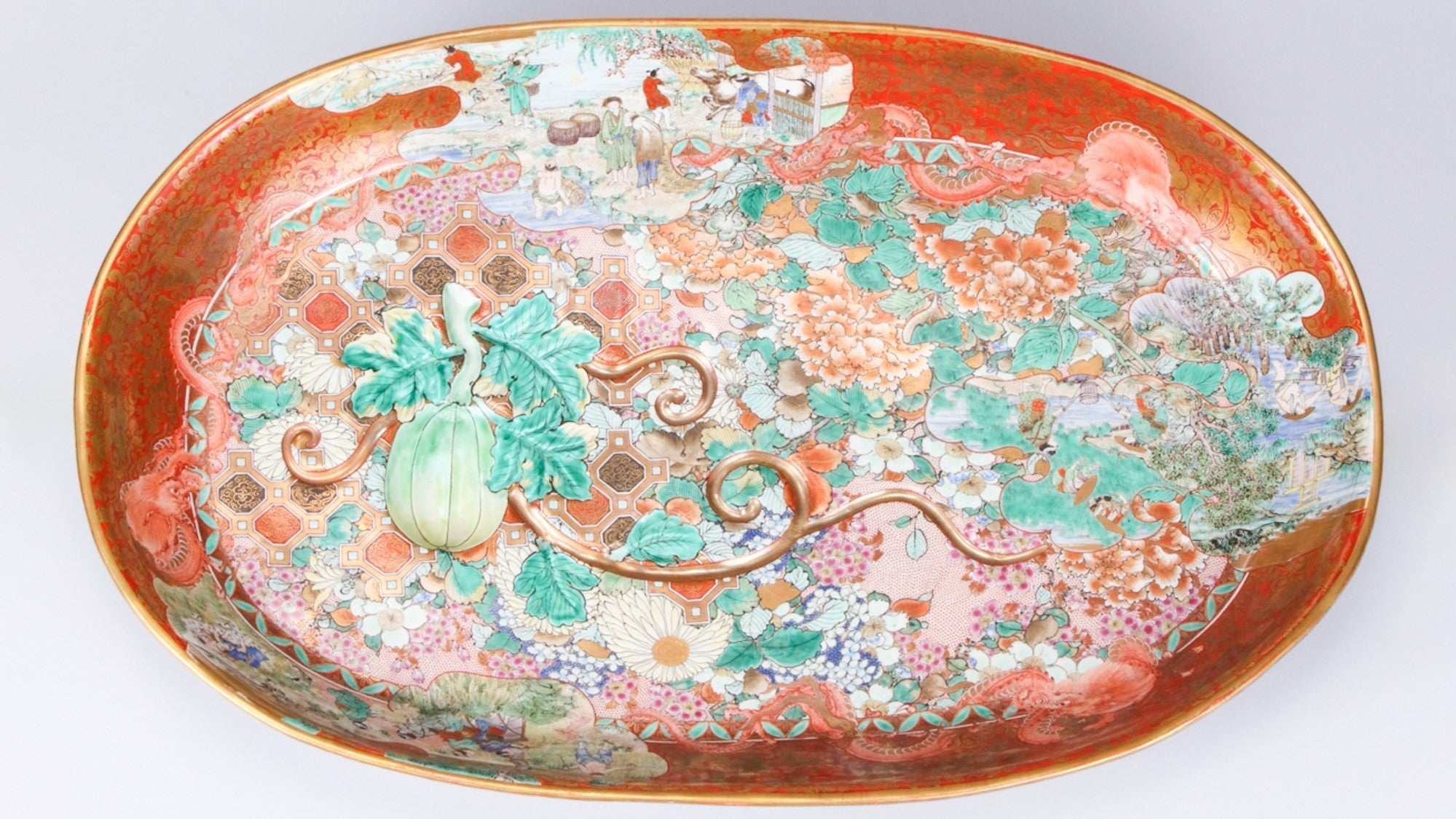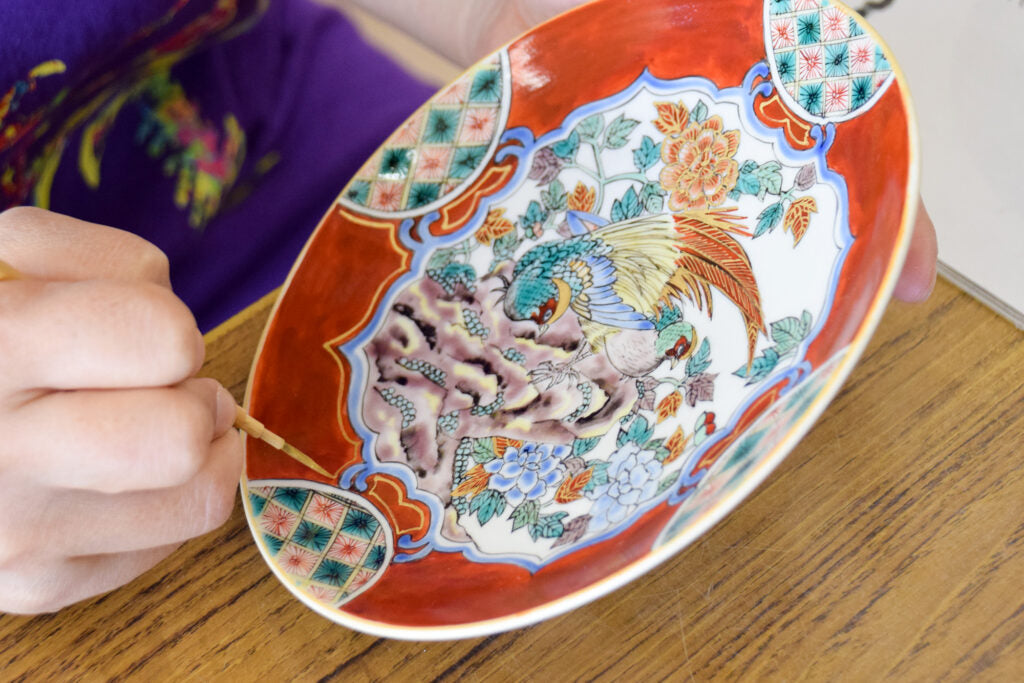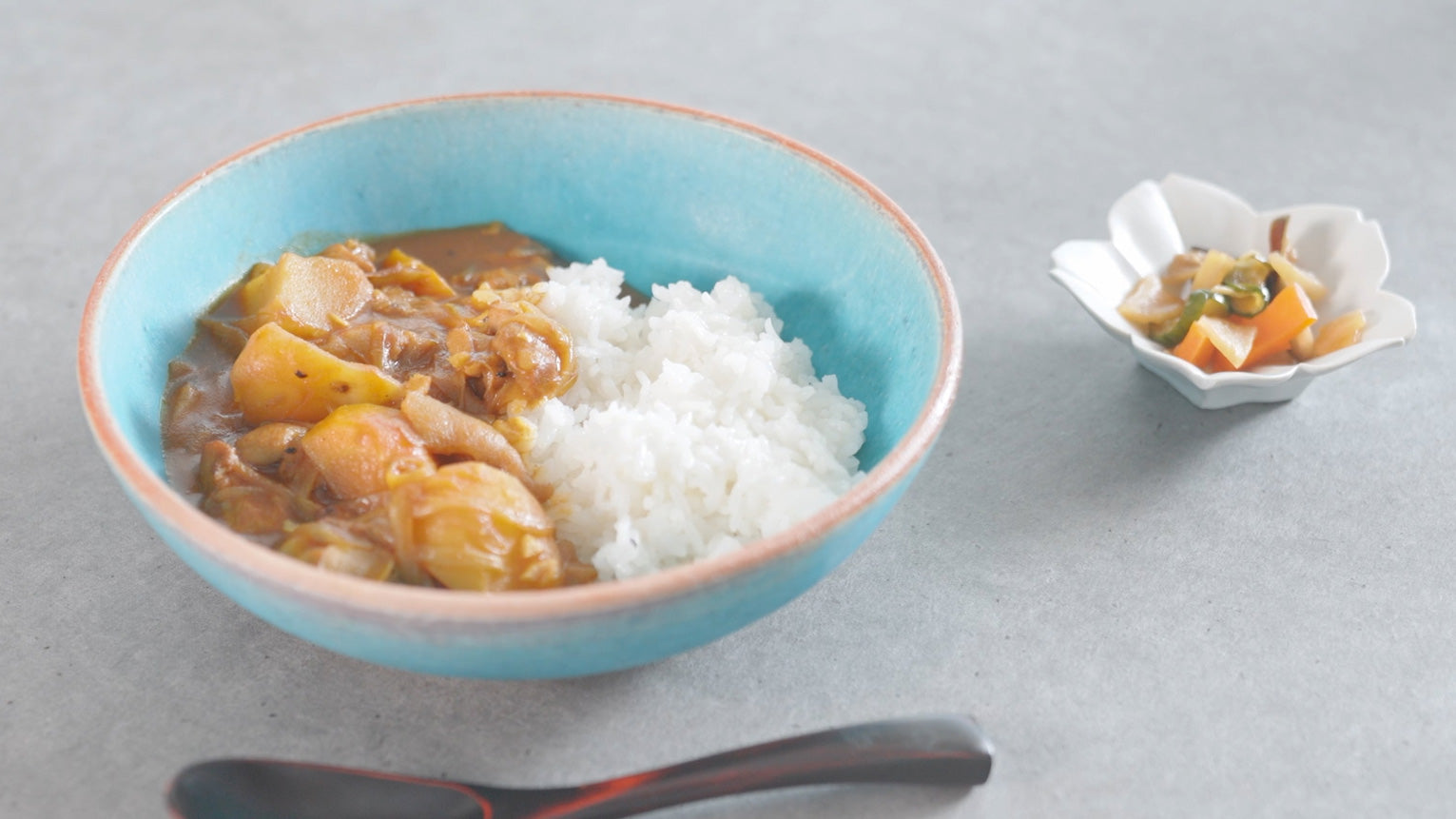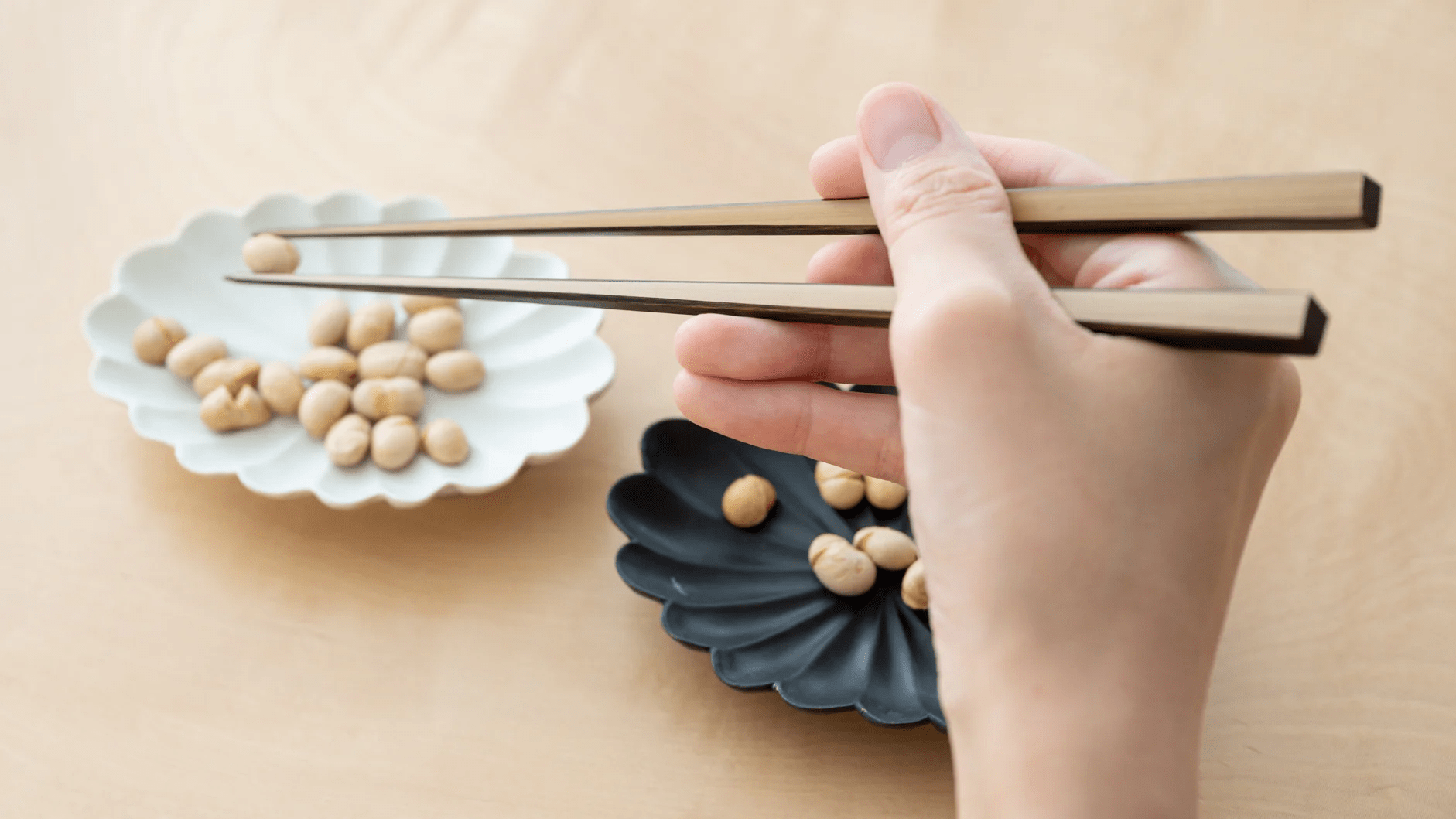
Interview with Nakaya Shinichi, Specialist of Kutani Ware - History Part 2
Written by Team MUSUBI
Shin-ichi Nakaya, Director of The Kutani porcelain Art Museum discusses historical stories and painting styles of Kutani ware.

Photo by KUTANism
Now, we will introduce crafts of the Meiji Period (1868 CE–1912 CE). Once the endorsement by the Maeda family* ended, the new Meiji government began to exhibit Kutani ware at the World Exposition and the National Industrial Exposition. This gave Kutani ware the name "Japan Kutani" overseas. The style that represented Japan Kutani was akae-kinrande (red painting with gold-painted designs), defining the world of Akae Kutani. Akae Kutani was completely different from the ao-te (an overpainting technique using green, yellow and purple) or gosai-de (a five-colored way of painting with ultramarine blue, red, purple, green and yellow) styles representative of Kutani ware up until that point.
Note: The Maeda family is descended from Toshie Maeda, a vassal of the Oda family that ruled Owari Province (present-day Nagoya City, Aichi Prefecture) and rose to the rank of lord of the Kaga Clan.

After the deaths of Oda Nobunaga and Toyotomi Hideyoshi, the Maeda family had a tumultuous history, including a plot to rebel against Tokugawa Ieyasu. Maeda Toshinaga, succeesor to Maeda Toshiie, also sought to secure the peace of his domain. Under his leadership, the rich culture known as Kaga hyakumangoku, meaning "Kaga One million-koku" (a koku being a unit approximately equal to 150 kg of rice) flourished.
table of contents
Did the style of Kutani ware change as it shifted from the domestic to foreign market?
Another characteristic was its symmetry. During this period, Japan Kutani was exported in pairs. This can be seen with most of the recent Kutani ware items brought back from Europe and the United States.

Photo by KUTANism
Please tell us about akae. The usage of red is completely different from original Kutani ware (colored porcelain). How did this begin?

Note: The five colors of overglaze pigment used in Kutani ware are called Kutani gosai. The four colors of blue (green), yellow, navy blue, and purple are paints with a transparency unique to Kutani ware, while the red is opaque.
The akae (overglaze red enamel) style, which was introduced by China and developed in Kyoto, was brought to Kutani by Aoki Mokubei—a master potter of Kyo ware who was invited by the Kaga clan to the Kasugayama kiln in Kanazawa City.

At the Miyamotoya kiln, one of the revitalized Kutani kilns built in the late Edo period, the master craftsman Iidaya Hachiroemon perfected the style of akae-saibyo (red detailed-drawing) by utilizing his painting ability and technique of glue placement. Today, the akae-saibyo style is also called Iidaya. Meiji crafts created a benchmark for craftsmen by evaluating them on their level of intricacy. The incredible techniques showcased in Meiji crafts is one of its highlights.

Akae was produced nationwide. Why was Kutani ware the only type of porcelain that became increasingly detailed? Does this have anything to do with the paintings distinct to Kutani ware?
Kutani ware was no exception. As the greatest of the colored porcelains, it is thought that Kutani ware tried to set itself apart from similar, red-painted porcelains in other regions through high artistry and detailed pattern composition

How does the development of Aka-e Saibyo lead to Akae-Kinrande–the core of Japan Kutani?
The kinrande (overglaze enamel and gold decoration) technique is an essential part of akae-kinrande. Eiraku Wazen, who was from Kyoto, contributed greatly to this technique. The remarkable achievement of Eiraku Wazen was that he implemented all the techniques he had learned in making Kyo ware to Kutani ware. He was especially skilled in handling gold. The technique of applying gold on a mirror-like surface had never been done with Kutani ware, and craftsmen were amazed at his methods. Even today, one can feel the deep respect for him in the fact that the kinrande style in Kutani ware is still called Eiraku.
Furthermore, Wazen's works are very sophisticated. The base material of Kyo ware is thin, which eliminates Kutani ware’s prior dullness. Here, the refined qualities of Kyo ware dynamically unite with Kutani ware.

I have the impression that Kyoto's DNA was involved in the turning point of Kutani ware. Is this because Kutani culture proactively sought out information from the outside?



How are the wonderful, traditional techniques of Kutani ware passed onto the next generation today?



Finally, is there anything you would like to tell Kutani ware fans around the world?
At the Kutani Pottery Village in Nomi City, there are nearly 200 masterpieces of Kutani ware from the Edo period to the present day at the Gosaikan and Asakura Isokichi Memorial Hall. Moreover, there are painting and pottery shaping experiences at the Experience Hall, a Kutani ware artisan's workshop to visit, and ten wholesale stores where you can purchase everything from daily use to luxury items. Here you are sure to find your own wonderfully unique Kutani ware piece!


Find your favorite Kutani ware

With its vivid hue and bold pattern, just one piece of the Kutani ware adds a touch of color to the dining table. Please visit our Kutani ware collection page.
















1 comment
Dear Alan,
Thank you for your inquiry. Japanese ceramics have many years of history and there are hundreds of kilns, so it is difficult for us to identify detailed information about a product. We hope you will have a professional look at them. We’re sorry, but we can’t be your help.
Best regards,
Musubi Kiln Concierge Team
Musubi Kiln Concierge Team
Leave a comment
This site is protected by hCaptcha and the hCaptcha Privacy Policy and Terms of Service apply.